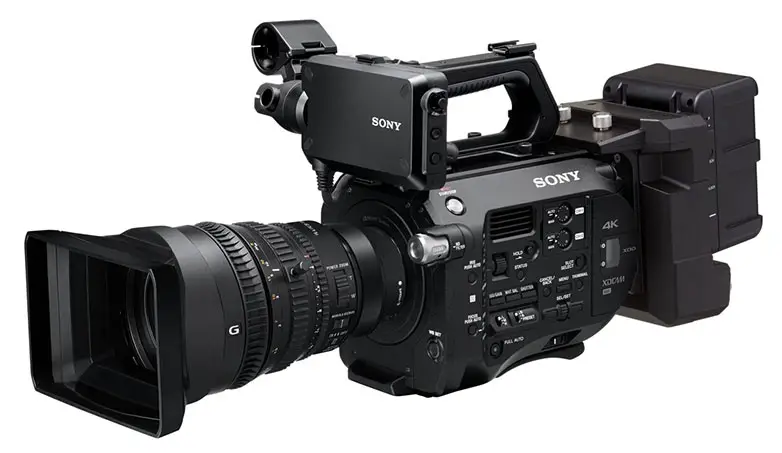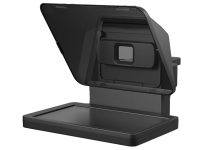Ten months ago Sony dropped the (4K) bomb with their PXW-FS7 at last year’s IBC trade show in Amsterdam, by introducing an extremely powerful 4K machine for less than $10K. It was, and still is a ground-breaking achievement, not only from a value standpoint, but also from the standpoint of a company going all-guns-blazing after a large market share, which was severely underserved at that point by cameras that were either lacking in features, or too expensive for what they had. The Sony PXW-FS7 was an evolution in terms of camera design from previous Sony attempts like the predecessor NEX-FS700, to which the FS7 owes a significant amount of features, but also a shrunk down, more one-man-band type sub-F5/F55 camera, with all of whom it supposedly shares a sensor and a lot of features.

The FS7 combines lightweight optics, efficient compression with high-performance 4K, excellent colour, wide dynamic range, a multitude of in-camera codecs, Log modes, shooting modes (CineEI/Custom) in a minimalist, rig-less, ergonomic package optimised for cinéma vérité type production. Recently, Sony invited Award winning cinematographer Andrew Young takes a critical look at the camera and workflow while by lending him a Sony FS7 to use for a documentary in the Middle East.
He recently gave a 50 minutes long presentation on his recent experience with the Sony FS7.
[via Cinescopophilia]
Things he liked about the FS7:
- Ergonomic, Scalable Design easy to transport on airplanes
- Best value for money in its class
- 4K on-board, flexible on-board codec options
- Timecode
- 4 Channel audio
- High Frame Rates & Variety of lens options
- High Dynamic range, Log and Raw recording options
Things he would like to see improved on the FS7:
- Needs flat bottom grip mounting option
- Needs rubberised menu wheel
- Needs movable magnification area
- Eyepiece should maintain horizon while adjusting
- Waveform not always visible
- S&Q needs direct access to dial in frame rates
If you are unfamiliar with the FS7 specs and features, here’s a brief rundown from B&H below.
- Super 35 Sized 4K CMOS Sensor
- Sony E-Mount
- 4K/UHD Up to 60 FPS, HD Up to 180 FPS
- 4096 x 2160 Raw Via External Recorder
- XAVC-I, XAVC-L, MPEG-2
- XAVC-I Up to 600 Mb/s
- Dual XQD Memory Card Slots
- Dual HD/3G-SDI & HDMI Output
- Ergonomic Handgrip with Camera Controls
While, the camera is a solid grab-and-go type of solution for documentary work, it does lend itself to extensive rigging for studio work, whether it be a corporate job, commercial (where that slow-motion comes in really handy) or a narrative project like a short or even a feature film.
The FS7 has enough gusto and horsepower to satisfy most projects with robust in-camera 4K 10bit 422 XAVC codec and 12bit Raw out of the (XDCA-FS7 ($1,999 at B&H) attachment unit) to a compliant external recorder like a Convergent Design Odyssey7Q+ and soon (after a future firmware update) Atomos Shogun, for more VFX heavy or colour grading intensive work. At $8K, you’re getting a whole lotta 4K for your buck in my book. B&H are even throwing in a free EF to E-mount Metabones adapter when you buy an FS7 or the now super-cheap FS700. Use the links below.
B&H Links:
Sony NEX-FS700R Super 35 Camcorder (Body Only) – $4,999
Sony PXW-FS7 XDCAM Super 35 Camera System – $7,999
Sony PXW-FS7 4K XDCAM Super35 Camcorder Kit with 28 to 135mm Zoom Lens – $10,499
Disclaimer: As an Amazon Associate partner and participant in B&H and Adorama Affiliate programmes, we earn a small comission from each purchase made through the affiliate links listed above at no additional cost to you.



He left out that Sony chose to make you pay a $2K penalty for raw, a feature that comes free, internally in a $5K camera, the Ursa Mini.
I was waiting for some idiot to come and say this.
As someone who owns an FS7, and has an Ursa Mini on order, the two packages come out at almost exactly the same price once you add in the EVF and storage for the Mini. The FS7 we will use mainly for doco/R&G work, as it has the built in NDs, the Mini will be A Cam on our dramas.
However, if I could only have one, it would be the FS7. Its unbelievably flexible, and the image quality, non-RAW, is astounding.
Question: how do you know the Ursa Mini won’t be as good for documentary work as the FS7? Are the built-in NDs on their own (lack thereof) sufficient to put you off of the Ursa Mini? Or is there something else where you can foresee a problem for this type of usage?
Ok, the two MAIN issues re the URSA Mini re docos are the lack of the internal NDs, and the poor handling re adjustment of audio (has to be done in a menu, and I’m not a fan of their A/Ds either). Neither are complete deal-breakers, but compared to the FS7 they are absolutely negatives.
There’s also the issue re storage media – right now that’s an enormous cost advantage to the FS7. Obviously, that may change.
The key thing for any doco shooter is – once you get used to internal NDs, they’re a hard habit to break!
/I do think the URSA Mini will sell like hotcakes once its out in the field and the software has stabilized. I’ve ordered one.
OK, thanks a lot. I guess it also comes down to the sort of doco that you shoot. I suspect that on the tip of a burning volcano or in a sand storm, you’d rather have internal NDs, but for interviews the issue is much less pressing.
PS: were can one see your work?
His negatives I would totally agree with. I also agree no way we see any of that fixed on this model. It’ll be all be for the FS7 II in 2017.